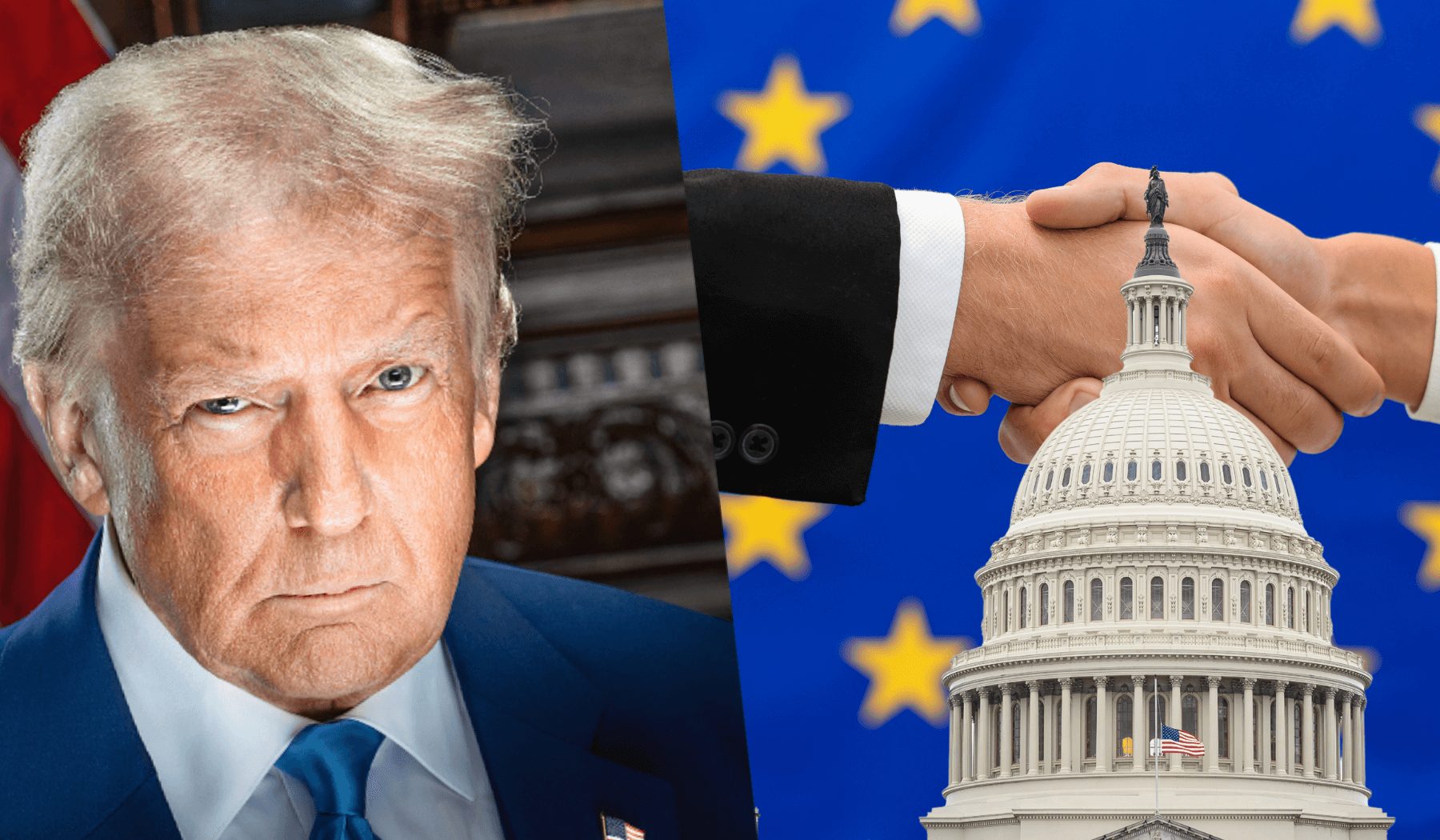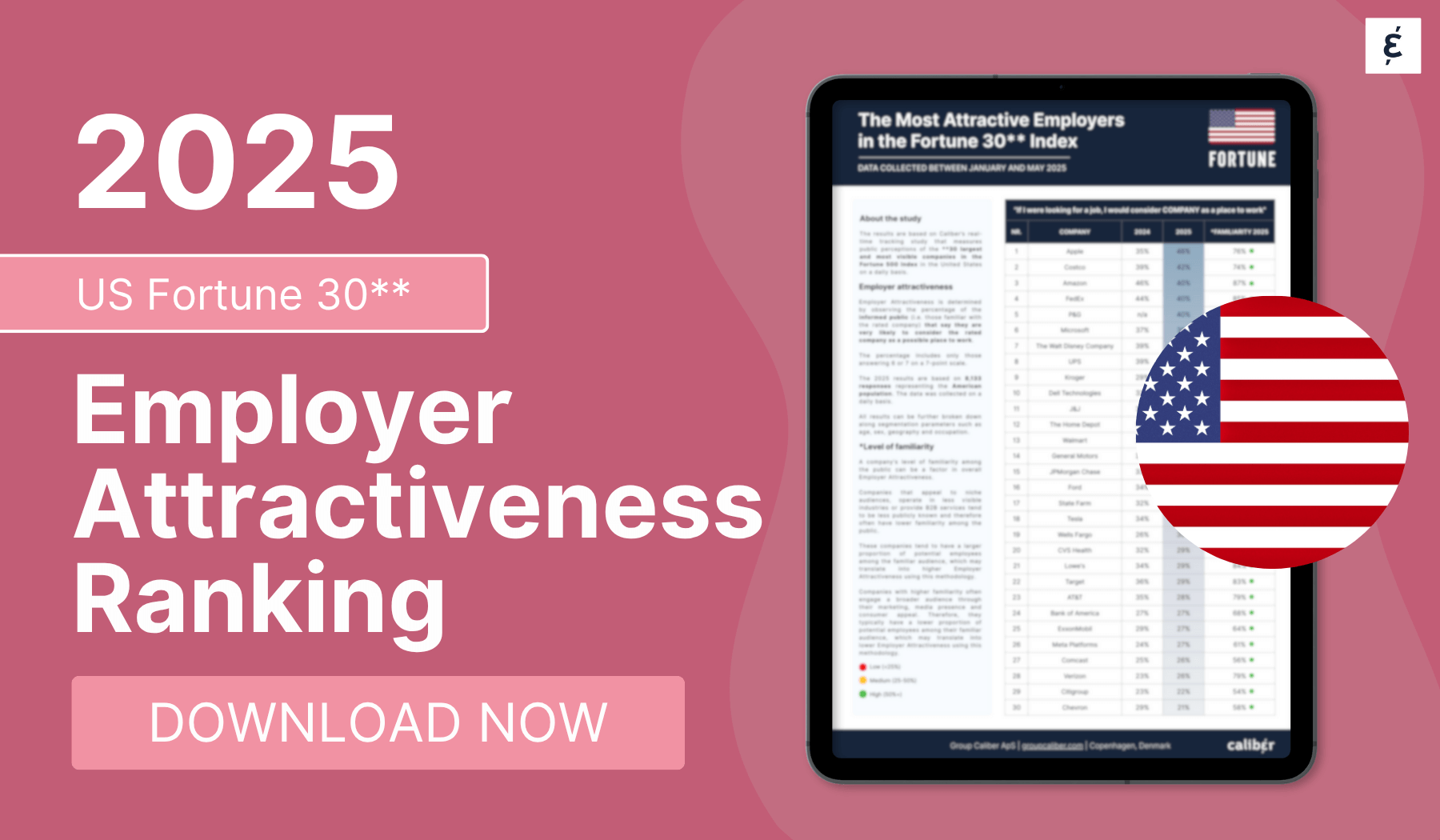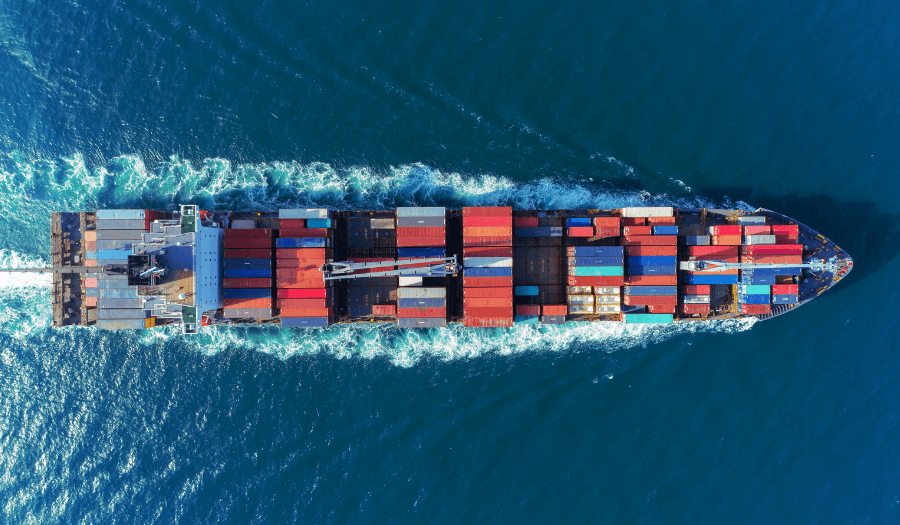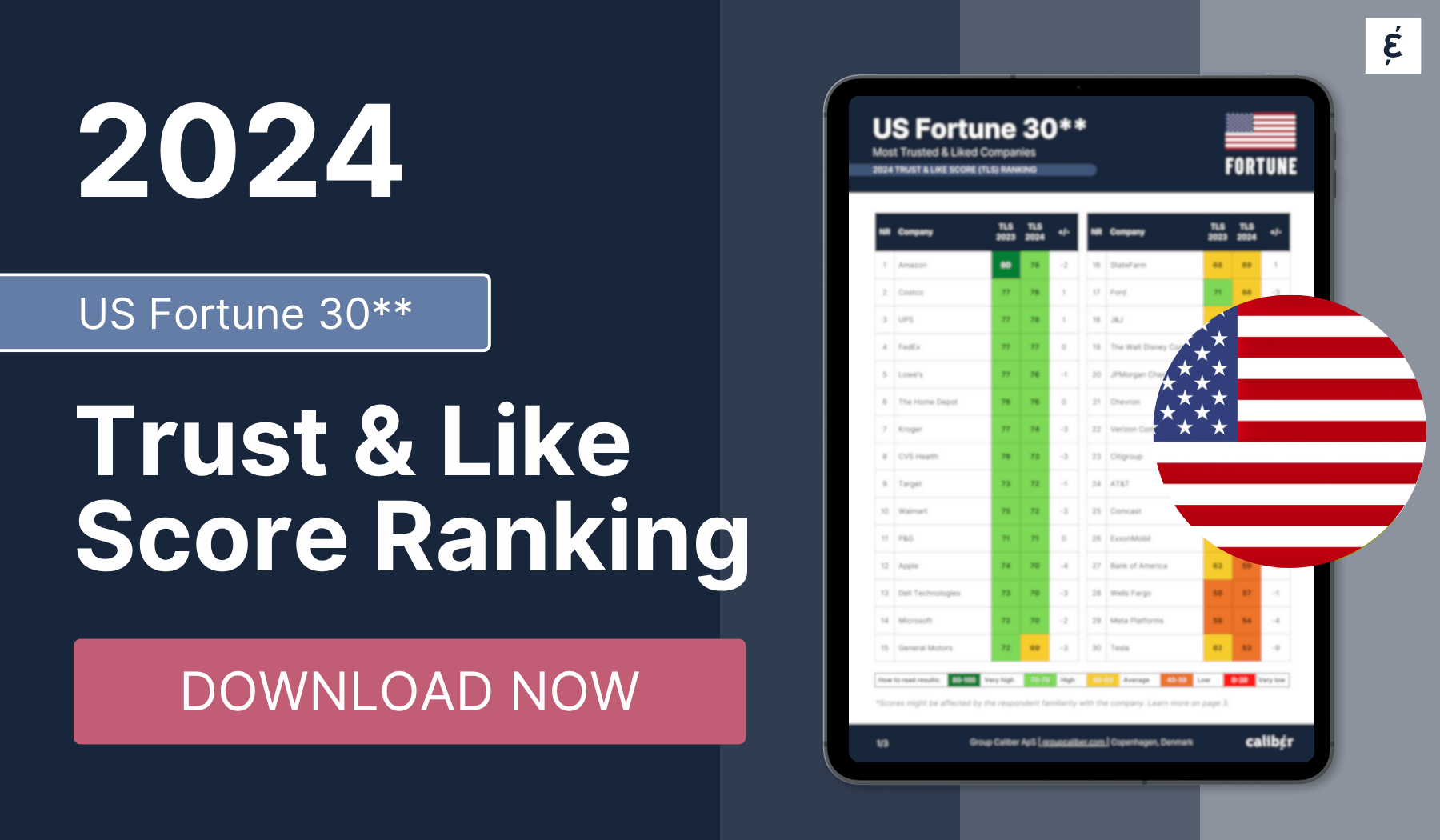
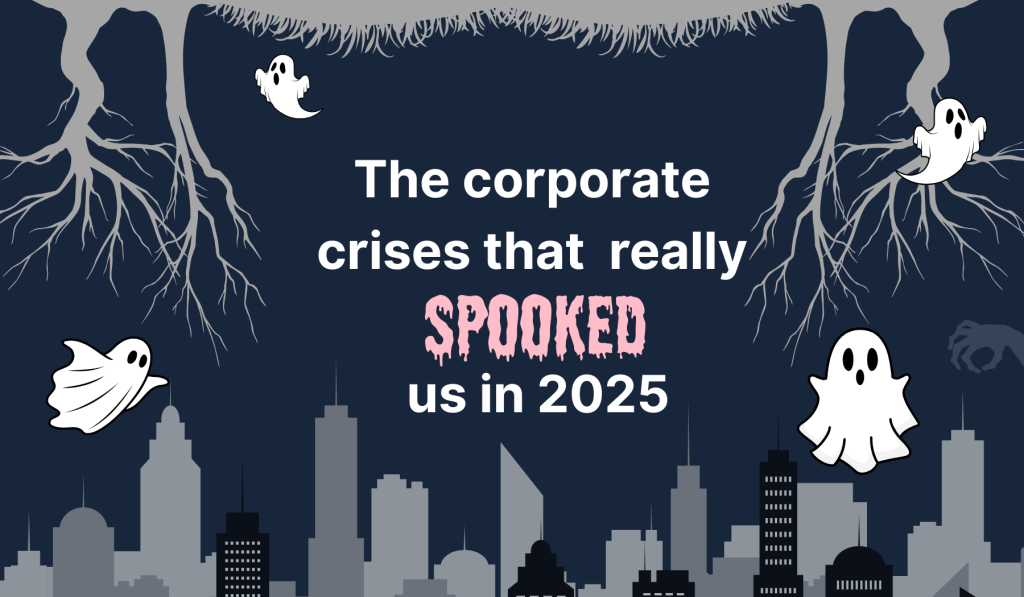
“Everyone has a plan until they get punched in the mouth.” Mike Tyson’s words proved prophetic for plenty of companies in 2025 — a year in which carefully constructed corporate strategies met unexpected reality.
Some were predictable, others surprising; all revealed a common thread. Companies had plans, stakeholder strategies, and crisis playbooks. What they didn’t have was an early warning that the punch was coming.
Before we dive into 16 headline-making stories that typified corporate crises and reputational risks this year, it’s worth pausing to ask: what does crisis management mean in 2025 and why does it matter more than ever?
In short, crisis management is the process of preparing for, responding to, and recovering from sudden disruptions — whether a cyberattack, a product recall, a leadership scandal, or a campaign that lands the wrong way.
And at its core, every crisis is the same: a test of trust.
When a crisis hits, stakeholders pay less attention to technical fixes and more to how leadership communicates, takes responsibility, and acts under pressure. Customers expect protection from harm. Employees expect leadership they can believe in. Investors and partners expect accountability.
Effective crisis management today goes beyond damage control. It’s about protecting confidence and rebuilding reputation. Handled poorly, a crisis can undo years of brand-building within hours. Handled with clarity, honesty, and speed, it can demonstrate resilience, transparency, and even strengthen reputation.
In the end, crisis management is about showing, in real time, what kind of company you are when it matters most.
Why Crisis Management Matters More Than Ever
In 2025, reputation is coin of the realm, and the numbers prove it. Companies with strong reputations outperform their peers on every major financial measure.
Reputation is estimated to account for as much as 28% of the total market capitalization of the S&P 500 — equivalent to nearly $12 trillion.
That’s why reputational risk now spreads faster and cuts deeper than ever before. A viral video can dominate headlines within hours. Backlash can erupt before leadership drafts a response. Silence or defensiveness only accelerates speculation.
In this environment, crisis communication has become as critical as operational response. The way leaders handle a crisis doesn’t just decide whether damage is contained — it determines whether trust erodes or endures, and whether financial value is preserved or destroyed.
Handled well, crisis management safeguards corporate reputation when it’s most vulnerable. It protects financial performance, reassures stakeholders, and signals resilience and leadership under pressure. In short, it turns pressure into proof of a company’s values.
In today’s digital era, crisis management isn’t just about surviving the damage. It’s about competing — and winning — on trust, credibility, and long-term value.
Many of the crises that made headlines in 2025 shared a common source: culture.
Whether it was Moët Hennessy’s alleged retaliation against a whistleblower, BCG’s ethical lapses in Gaza, or Target’s retreat from its own diversity commitments, reputational damage more often stemmed from internal behaviour and leadership tone than from external shocks.
Political volatility, executive misconduct, data breaches, and cyberattacks all converged to expose how fragile trust has become when organisations misread their own values or stay silent under pressure.
As one crisis strategist concluded, a new wave of “chaos-driven crises” is emerging — unpredictable, fast-moving events that ignite without warning and defy familiar playbooks. In this new landscape, reputation is shaped less by policy than by conduct and perception.
As PRovoke Media put it, “it’s no longer enough for companies to prepare for what might go wrong. They must now anticipate how the world will feel about it when it does.”
Here’s what sixteen of the year’s most newsworthy cases show us, organized by the kind of reputational challenge each company faced.
These crises stem from failures at the top — whether through misconduct, institutional silence, or ethical boundary violations. The reputational damage comes not from the event itself, but from the erosion of faith in leadership.
A kiss-cam at a Coldplay concert captured Astronomer’s CEO and HR chief sharing an awkwardly intimate moment. The clip went viral; both resigned within a week, and co-founder Pete DeJoy stepped in as interim CEO.
The fallout was driven less by corporate wrongdoing than by public perception — a cultural misstep that leadership failed to anticipate before the internet decided for them.
Fuji Television faced a national reckoning after reports revealed executives ignored a sexual-assault complaint against prominent presenter Masahiro Nakai. Dozens of advertisers, including Toyota and Nissan, suspended campaigns, and top leadership resigned.
The scandal escalated when the company admitted it had known about the complaint for six months and done nothing. What began as a personnel issue became a symbol of institutional silence and cultural complicity across Japan’s media industry.
Nestlé CEO Laurent Freixe was ousted in September for concealing an affair with a staffer — a clear breach of the company’s code of conduct. The swift removal of Freixe, a 39-year company veteran, came amid sluggish sales and investor frustration.
While the stock market reacted negatively to the ousting of its CEO, just a year after taking office, it remains to be seen how the change of guard and continued coverage of the story will affect its reputation among both internal and external stakeholders in the longer term.
A Financial Times investigation revealed that BCG employees had modeled cost scenarios for relocating Palestinians as part of an unauthorized “Trump Riviera” reconstruction concept.
Amid a global backlash, Save the Children cut ties, and the firm dismissed two senior partners. It also apologized and launched an independent review, calling the work “unauthorized and inconsistent with company values”.
The incident exposed a governance gap at one of the world’s top consultancies — showing how ethical blind spots can form even in firms built on intellectual rigor.
Moët Hennessy, the drinks arm of LVMH, became the center of a legal battle over sexual harassment, gender discrimination, and toxic culture. The case, brought by former chief of staff Maria Gasparovic, triggered widespread discussion about workplace dynamics in luxury firms.
The company’s decision to countersue Gasparovic for defamation backfired, inviting accusations of retaliation and denial. Multiple new complaints surfaced, painting a picture of systemic issues within one of France’s most prestigious corporate empires.
JPMorgan Chase’s ties to Jeffrey Epstein resurfaced after a New York Times report revealed the bank maintained accounts for him long after his 2008 conviction. The renewed scrutiny reignited debate over ethics and accountability in global finance.
According to our data, JPMorgan’s Trust & Like Score in the US fell five points after the story came out; among Democrats, the TLS fell nine points, while among Republicans it rose by seven — showing how even perceptions of corporate integrity are increasingly polarized in the US.
These crises emerge when companies say one thing and do another — or get caught between competing stakeholder expectations. The damage comes from perceived hypocrisy or inconsistency.
Under political pressure, Target rolled back its diversity, equity, and inclusion initiatives — triggering outrage from communities that had once been its most loyal supporters.
Civil rights groups launched a “40-Day Fast from Target”, and foot traffic declined for 11 consecutive weeks. The controversy wasn’t so much about policy as about perceived betrayal. For many, Target’s reversal symbolized a moral retreat from values it had publicly embraced.
When ABC suspended Jimmy Kimmel Live! under political pressure, parent company Disney once again found itself at the center of America’s culture wars — and faced boycotts.
The episode reignited debate over its identity and revealed a company torn between incompatible stakeholder expectations, without a clear framework for which values should prevail under pressure.
As ICE raids swept through US cities — often in Home Depot parking lots — the company remained silent. While other corporations had spoken out on social issues, Home Depot deferred all inquiries to ICE and offered no public position.
Activists and customers viewed the silence as complicity. In an era when stakeholders expect leadership on social issues, neutrality became the loudest message of all.
Trust in Tesla collapsed across stakeholders. A jury ordered it to pay $243 million over a fatal Autopilot crash, while regulators linked multiple deaths to “foreseeable driver misuse.”
But public sentiment also soured amid Elon Musk’s ongoing political controversies, further exposing how deeply Tesla’s reputation is tied to its founder. Indeed, our data shows Tesla’s Trust & Like Score has dropped 22 points since 2022, an unusually steep decline for a brand that once enjoyed cult-like loyalty.
Technical failures and data breaches have become unavoidable facts of corporate life. What distinguishes a disruption from a reputational crisis is how an organisation responds when systems fail and stakeholders are at risk.
Whether the cause is an outage, a cyberattack, or a breakdown in critical infrastructure, the real damage comes from gaps in preparedness, transparency, and accountability.
In 2025, the companies that faltered weren’t just those hit by technical problems — they were the ones that underestimated how fragile trust can be when communication lags behind consequences.
A cyber attack on Australian airline Qantas exposed data from six million customers just as the company was trying to rebuild its reputation. It moved quickly to apologize and tighten protections, yet the incident reopened old wounds.
For many Aussies, it confirmed that Qantas had not yet regained its former reliability. Even a competent crisis response could not compensate for fragile trust.
South Korea’s largest mobile carrier disclosed a breach affecting 27 million users and was fined ₩134 billion for outdated systems. The revelation shocked customers who assumed the company’s technical sophistication ensured security.
The fallout damaged SK Telecom’s credibility in one of the world’s most digital societies. It was a stark lesson in how innovation without vigilance undermines trust.
A routine systems upgrade at Optus spiraled into a national emergency in Australia when the network went down for 13 hours, cutting off emergency services and leaving multiple fatalities.
The company’s delayed and inadequate communication amplified outrage. Customers and regulators accused Optus of complacency and indifference in a moment of public danger. By the time leadership apologized, trust had already evaporated.
Japanese drinks giant Asahi was forced to halt operations across 30 factories after a cyberattack paralyzed production and logistics. The shutdown led to shortages of Asahi Super Dry and Nikka Whisky nationwide.
The disruption revealed deep vulnerabilities in Japan’s industrial infrastructure. A company once synonymous with reliability became a case study in the country’s digital fragility.
A failure in Amazon Web Services’ US-East region crippled thousands of websites, banks, and logistics systems for hours.
While the incident dented AWS’s reputation, many customers blamed retailers rather than the cloud provider behind the scenes, exposing how dependent global commerce has become on a single point of failure that few ever consider.
When a cyberattack halted much-loved British retailer M&S’s online orders and supply chain for weeks, analysts predicted a financial hit of £300 million.
Yet customers responded with sympathy, viewing the retailer as a victim rather than a villain. The difference lay in decades of accumulated goodwill. M&S’s trust capital turned disruption into affirmation, proving reputation can be a shock absorber.
What these cases reveal isn’t a catalog of spectacular failures. They’re snapshots of disconnect. Disconnect between what companies assumed stakeholders believed and what stakeholders actually thought. Between internal strategy and external expectation. Between narrative and nuance.
In each scenario, the signals were there: small shifts in employee sentiment, early investor chatter, changes in regulator focus, subtle consumer behaviors. What many companies lacked wasn’t necessarily data, but a framework for turning multi-source intelligence into live insight and action.
That’s where stakeholder intelligence becomes critical for crisis management.
The taxonomy above isn’t just descriptive. It’s diagnostic. Each type of crisis leaves a distinct signature in stakeholder signals long before it becomes a headline:
Together, these signals form an early-warning system for reputation — one that’s available to every company, but recognised by too few.
Indeed, companies that gather stakeholder intelligence don’t just respond better to crises. They create three foundational advantages:
Without benchmarks, you can’t detect when things shift. Stakeholder intelligence means knowing what employees, customers, investors, and opinion leaders think during stable times, so you recognize the tremors before they become earthquakes.
M&S survived its cyberattack because it had decades of accumulated goodwill. Qantas struggled with its breach because trust was already brittle. The difference wasn’t necessarily the incident. It was the baseline.
Crises rarely emerge fully formed. They build. An employee concern becomes a culture issue. A customer complaint becomes a movement. An analyst’s question becomes a confidence problem.
Stakeholder intelligence aggregates these weak signals across multiple groups — employees, customers, investors, talent, experts, influencers — and reveals pattern breaks before they solidify into crises.
The consequences of Target’s DEI rollback likely blindsided leadership because they weren’t monitoring how deeply stakeholders had internalized its earlier commitments.
Tesla, similarly, appeared unprepared for the erosion of confidence already reflected in its declining Trust & Like Score, suggesting the company wasn’t actively tracking stakeholder perception until it had translated into lost sales.
In each case, the signal was there. What was missing was the system to detect it.
When a crisis does arrive, companies with stakeholder intelligence don’t start from zero.
They already know:
What stakeholders valued before the crisis (so they know what’s at risk)
What their tolerance levels and expectations are (so they can calibrate response)
What would restore versus erode trust (so they don’t guess under pressure)
This is often the difference between a company that struggles to handle a reputational crisis and one that doesn’t. The latter knows its stakeholders. The former is likely caught between stakeholder groups it hasn’t mapped.
In 2025, the companies that weathered crises best weren’t the ones without problems. They were the ones who knew their stakeholders well enough to act before trust collapsed.
Stakeholder intelligence turns crisis management from reactive damage control into informed resilience. It doesn’t prevent every crisis, but it does three things that matter:
It gives you early warning, so you can act while the issue is still manageable rather than after it’s metastasized.
It maintains alignment, so your strategy evolves in response to stakeholder signals rather than stakeholder revolts.
It protects trust, because stakeholders recognize when they’re being heard, not just managed.
Indeed, the most enduring insight from 2025 wasn’t “what went wrong”. It was how much easier it is to miss what’s happening beneath the surface. For companies today, the question isn’t just “How do we respond?” It’s “How do we listen first?”
You may also be interested in:

